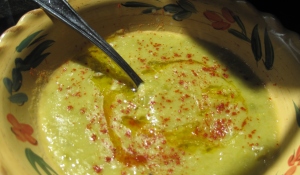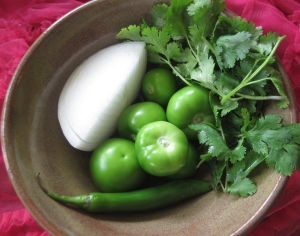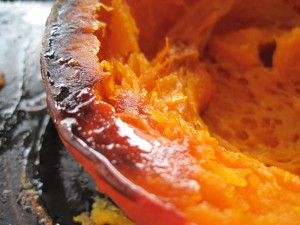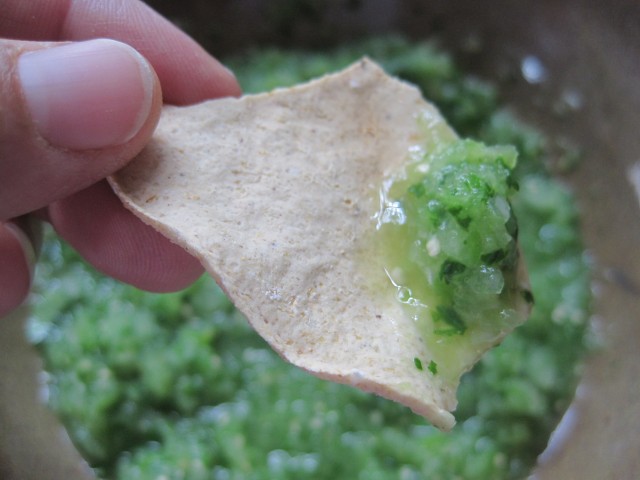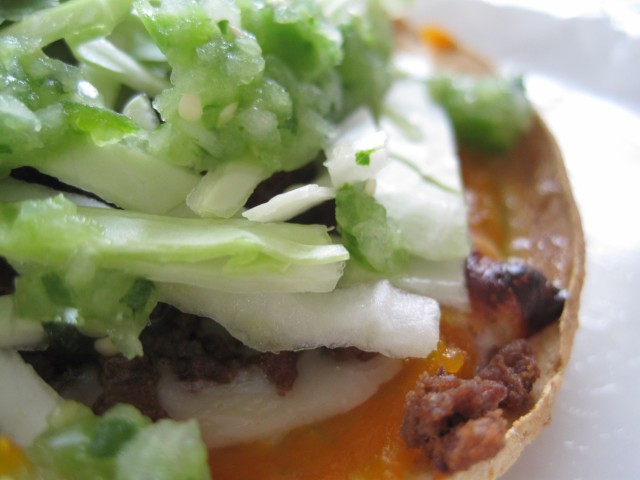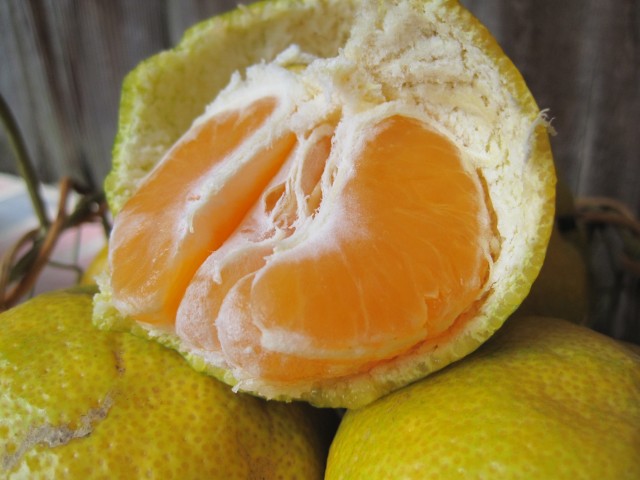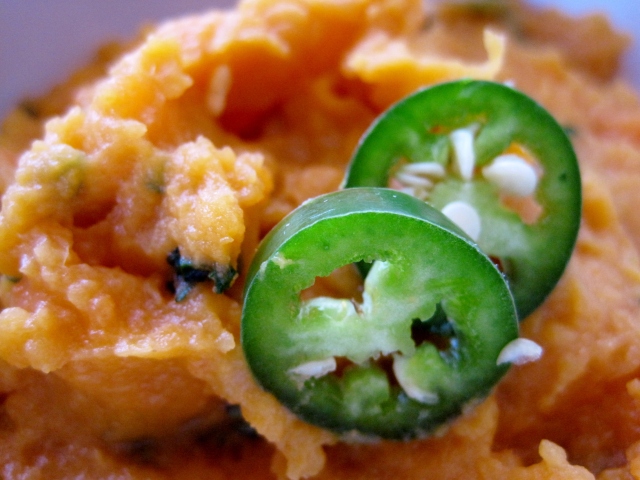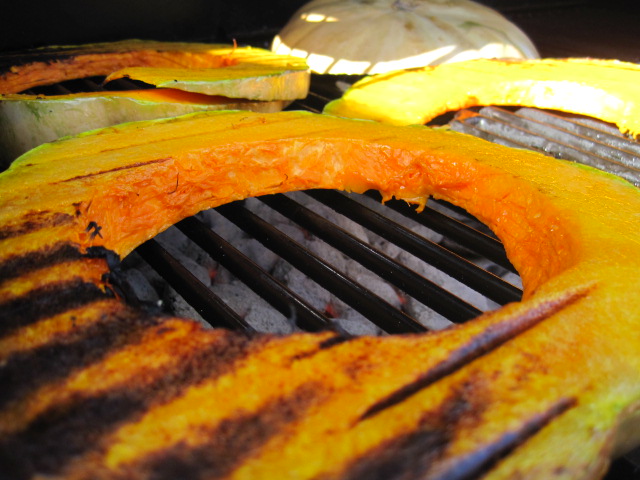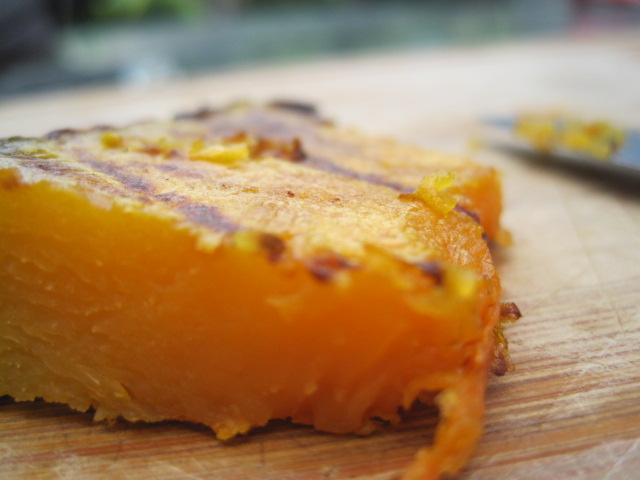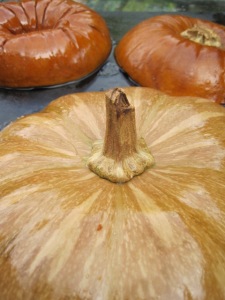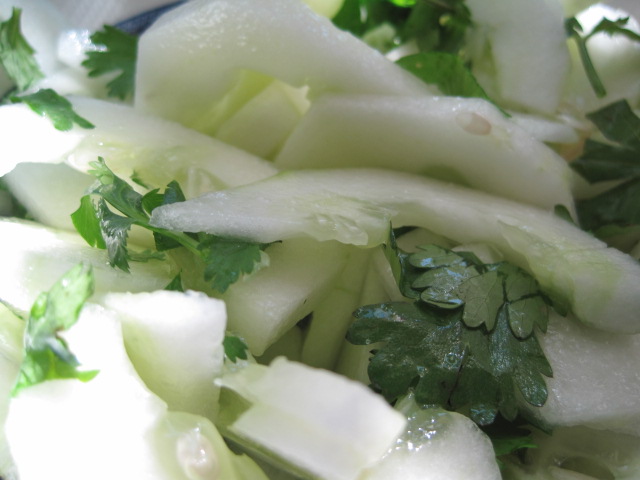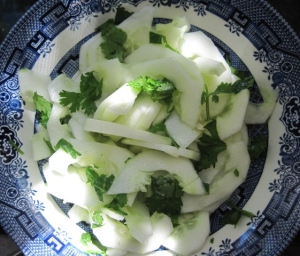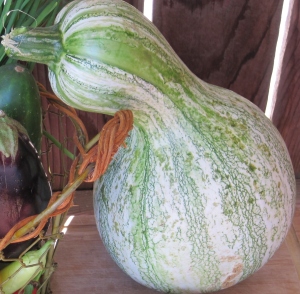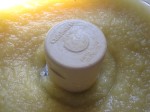It was gonna be good, y’all.
I knew I had found a way to entice my husband to eat not just a polite amount of squash and eggplant, but a whole, whole bunch. Think Cajun. Add shrimp. And pull out the big guns…a secret weapon bound to send any Texas boy for seconds.
So I chopped. I was so very proud of myself. I even hummed while chopping. You remember those beautes from Saturday? Zucchini, yellow squash, patty pan squash, eggplant, and the cute little peppers? Add in a large onion, 1/2 a bulb of garlic, and 2 celery stalks. That’s a whole lot of choppin’.

John was eyeing the whole cutting board with doubt. I could tell he was thinking of substitutes for dinner so I needed to bait the hook.
“Don’t worry. I’m adding shrimp.” Some flicker of interest. His eyes rolled over the mounds of eggplant and squash again, and his look settled into one of faithlessness. I went in for the kill. “I’ve got sausage.” Pause for effect. “Jalapeno sausage.”
After that, he stopped rummaging through the freezer.
I carried on, sauteeing onions, celery, and peppers. I added in the garlic, the eggplant, the squash. I salted, I cayenned. I had locally grown jasmine rice in the rice cooker steaming away. This was going to be great. My next step was to throw in the tempting aroma of cooking sausage to melt any remnants of apprehension in John.
I opened the Prasek‘s package, that yummy stuff from down the road, grabbed a link, and paused with the sausage mid-air. It felt a little slimy. It was a brand new package, vac sealed, so I checked the sell-by date. Nov. 13. That was good. I sniffed it. It smelled appropriately smoky, no putrid odor, at least. I glanced at John. I looked at my beautiful vegetables. And in the way that one senses that a whole chain of events are resting on one single action, and that merely by using speed you can avert a consequence, I quickly chopped it up and threw it in the pan. No overthinking it here.
At ease, I was stirring, adding in the tomatoes and broth, when I realized that one sausage link was not enough. I had shrimp, yes, but it was the sausage that was going to turn this into my man’s new favorite meal.
Back to the package for another link. This time, though, a string of slime followed that link for an entire twelve inches before breaking. A sinking feeling settled in. This could not be good. My hand was covered in slime and I not only had to rinse the link off, but actually soap up my hand to remove it. Somewhere, though, I was pulling for normalcy. Hadn’t I seen this before? Maybe it was the type of casing. I sniffed the bag again. It smelled okay. Then John spotted me smelling the bag.
“It’s fine,” he stated firmly. “Really. You’re cooking it right?”
“Well, yes, but I’ve just never seen slime like this before. But it smells alright.” He nodded with assurance, mumbling something about slime being normal and went back to his computer. And I went for my laptop and googled slime on sausage. The results were not reassuring, but…well, my precious vegetables! I decided I’d call Prasek’s. Maybe it was some kind of slimy variation of casing that I hadn’t noticed last time. I looked at the clock. Maybe, just maybe the fine people at Pracek’s were still there. But what were my chances at 6:35 p.m.?
“Um, yes ma’am, let me ask someone who knows.” Yes!
“Y’ello! You got a question?” he drawled in a friendly way.
I described my sausage in familiar, casual terms…fishing for reassurance. “Y’know…he-he…the way that jalapeno sausage, um, gets kind of slimy?”
“How slimy are we talking about? Is it clear slime or milky-white?
“Milky-white. Is that bad?” A long pause.
“Where’d you buy it?”
“[Unnamed Large Grocery Store Chain].”
“Hmmm….we’ve been getting quite a few calls lately, all from people buyin’ there. I don’t know their chilling practices but if they let it get warm and then cool it again, it will go bad. I’d take it back.”
I was getting desperate. “Um…the slime is only like a foot long. Isn’t that normal sometimes? What if I cook it real good?”
He chuckled. “Well, you could cook it but I wouldn’t eat it. I would take it back and get my money.”
“What did you expect him to say,” said John after I hung up. “We’re cooking it. It will be fine.” So, again, looking at my giant saute pan of vegetables, I threw in the shrimp. Expensive shrimp. There. Decision made.
Except for maybe one last search on Google, for the children’s sake. Slime on sausage normal. Biased search entry, I know. This time, I searched charcuterie forums, sausage specialty sites, and even scanned an academic paper discussing the differences in animal casings.
John interrupted my frantic page clicking. “We’re eating it.” I was just about to acquiesce when my eyes fell on a Google return from a food safety site, highlighting the phrase “the amount of slime indicates the numbers of bacteria.” Okay, that was it. Linking the quantity of slime present to the bacteria counts broke me. Besides, I was beginning to think that it wasn’t smelling too hot either.
I looked up at John. He looked at my face. He’d seen that look before. “We’re eating Chik-fil-A, aren’t we.”
Epilogue:
Before the sun went down, John helped me hold the remaining slippery sausages for my pictures. Even he looked genuinely grossed out. This was good, I thought. At least he won’t be disappointed, or think I’m overreacting.
We decided I would go the store for a refund, and he’d feed the kids from random stuff at home instead of Chik-fil-a, mourning the loss of not only time and effort, but also a whole lot of money in that pan.
I returned later to find he’d eaten two bowlfuls and said it was fantastic…too bad I missed it…and something about the eggplant really making it something. I am telling the truth. I’ll let you know if he’s still alive tomorrow. Meanwhile, here’s a shot of the sausage. Enjoy.
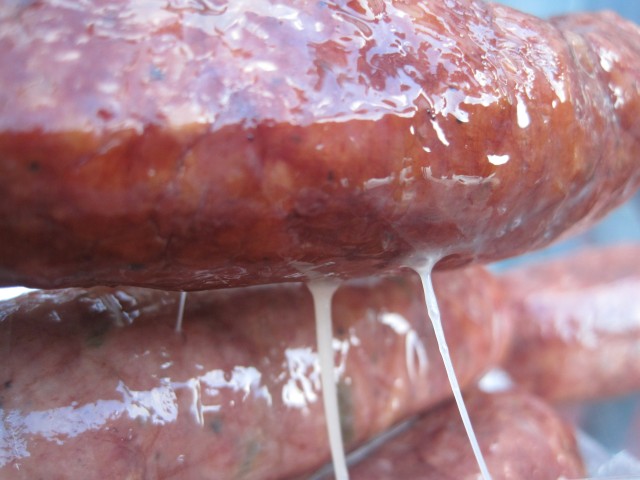
Bon appetit!
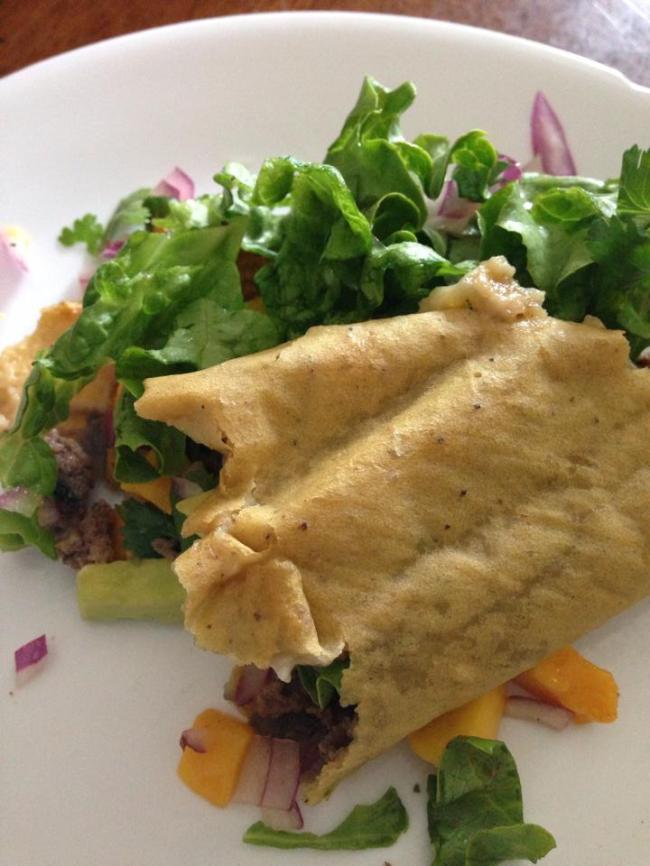 AIP-friendly tacos. That’s a plantain wrap holding it all together.
AIP-friendly tacos. That’s a plantain wrap holding it all together.
